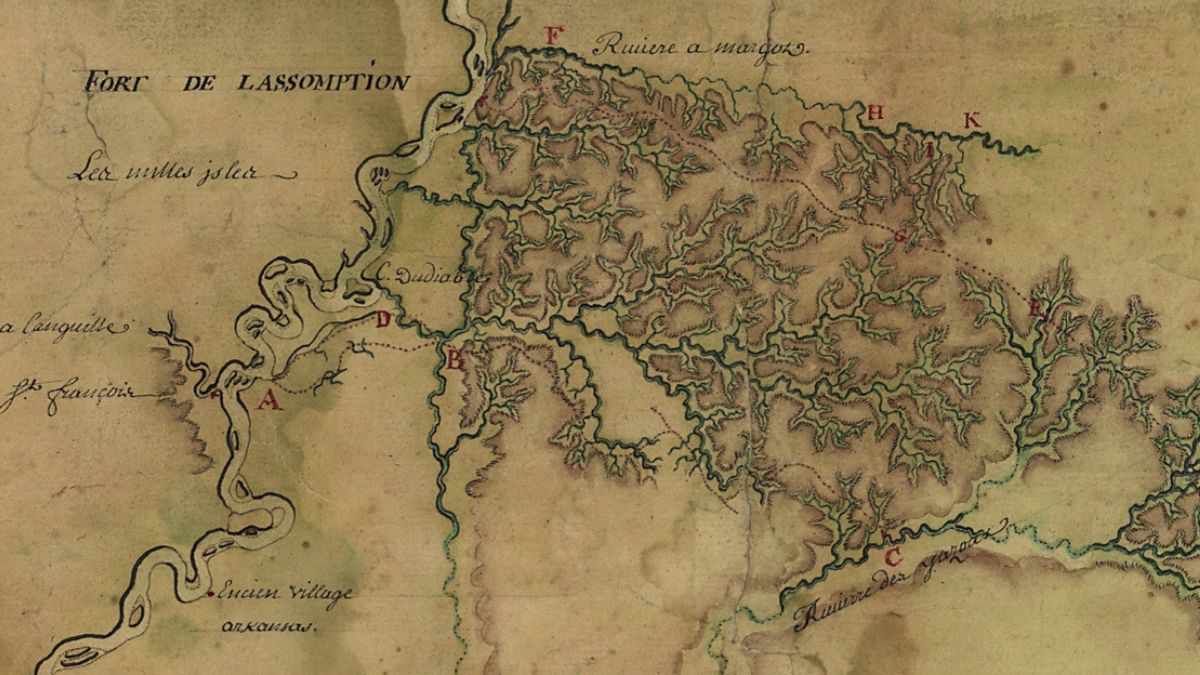Fort Assumption, also known as Fort De L’Assumption, was built in the early 18th century and played a critical role in French colonial ambitions in North America.
Strategically located on the Fourth Chickasaw Bluff, it was pivotal for military defense, trade control, and establishing French influence in the Lower Mississippi Valley.
Led by Jean-Baptiste Le Moyne, Sieur de Bienville, its construction marked a significant step in French fortification efforts.
This site became central to interactions with native tribes and was a launching point for various expeditions. Today, Fort Assumption’s legacy is preserved through cultural celebrations and historical markers in modern-day Memphis.
Historical Significance of Fort Assumption
Fort Assumption was pivotal in French colonial strategy and interacted significantly with native tribes.
Its construction was essential in establishing a French presence in North America.
Origins and Construction

Fort Assumption, also known as Fort de l’Assomption, was constructed in the early eighteenth century under Jean-Baptiste Le Moyne Sieur de Bienville.
Located at the Fourth Chickasaw Bluff, near present-day Shelby County, it was strategically positioned on the highest part of the bluff for military defense and trade control.
Bienville aimed to establish a stronghold in the Lower Mississippi Valley.
The French fortification efforts were part of broader ambitions to secure the French King’s interests in the region.
The construction project was initiated on Assumption Day, inspiring the name Fort Assumption.
Role in French Colonial Strategy
The French Governor of Louisiana saw Fort Assumption as critical for asserting dominance.
It was intended to support French military campaigns, such as the Chickasaw Campaign, and to establish a continuous line of French influence from Canada to Louisiana.
The fort was part of a series of French fortifications, including Fort Prudhomme and Arkansas Post.
These efforts were designed to control the Mississippi River fur trade and solidify the French presence.
Fort Assumption also served as a launching point for various military and exploratory expeditions in the region.
Interactions with Native Tribes
Fort Assumption was central to French interactions with native tribes, including the Chickasaw and Natchez Indians.
The French aimed to establish trade and military alliances, often resulting in complex relationships marked by cooperation and conflict.
Peace overtures and trade agreements were common strategies employed by the French to gain favor and support.
Despite efforts at peace, conflicts often arose, especially as the French attempted to expand their territorial control, impacting native populations.
The fort’s presence symbolized French aspirations but also the challenges of colonial expansion amidst diverse native cultures.
Explore More: 21 Historic Forts of Tennessee
Fort Assumption’s Legacy
Fort Assumption is a significant site with a rich history and lasting influence on culture, geography, and preservation efforts.
The legacy of this historic area includes numerous heritage points and contemporary landmarks in present-day Memphis.
Cultural and Geographical Impact
Fort Assumption has greatly influenced the cultural landscape of present-day Memphis, notably through events such as the Feast of the Assumption.
This celebration, held annually, honors the historical and religious significance of Fort Assumption and the nearby Saint Mary.
Geographically, the site offered wide terraces and strategic positioning, which contributed to its historical importance.
These features are now incorporated into modern areas such as Tom Lee Park and local history tours, which capture the essence of Fort Assumption’s past.
The French heritage traces back to the fort, contributing richly to the region’s cultural fabric.
Shelby County, encompassing Memphis, has tried to retain and highlight this influence through state maps and historical markers.
Historical Preservation
Efforts to preserve Fort Assumption’s legacy include maintaining historical markers and offering educational tours.
Locations like Tom Lee Park, which overlays part of Fort Assumption’s original site, serve as living reminders of the fort’s historical role.
The area’s importance has been recognized with numerous historical markers and references in state maps.
Contemporary accounts from when Fort Assumption was operating offer detailed insights into local history.
They cover everything from early French incursions, including Fort Prudhomme and Fort Loudoun, to the final unsuccessful foray into the region.
Railroad bridges and other historical structures in present-day Memphis add to the preservation efforts, ensuring Fort Assumption’s influence remains part of the city’s cultural and historical narrative.

Cory is a website owner and content creator who enjoys fishing, history, coin collecting, and sports, among other hobbies. He is a husband and father of four.
Romans 15:4 For whatever was written in former days was written for our instruction, that through endurance and through the encouragement of the Scriptures we might have hope.

